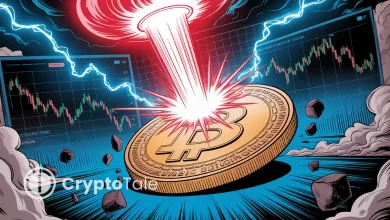Institutional Bitcoin Staking Boosts With Core-Hex Partnership

- Core and Hex Trust enable institutions to stake Bitcoin securely under custody.
- The partnership introduces regulated BTCFi yield opportunities in APAC and MENA.
- Institutions gain compliance, control, and reward tools through Core integration.
Bitcoin has long been viewed as a passive asset for institutions, wherein custodians held it safely, but yield opportunities were limited. To combat this, Core Foundation and Hex Trust have partnered to bring institutional-grade Bitcoin staking to clients across Asia-Pacific and the Middle East. The partnership combines Core’s Dual Staking product with Hex Trust’s custodial infrastructure, giving institutions a gateway into “BTCFi,” a decentralized finance built on Bitcoin’s security.
Unlocking Bitcoin’s Utility for Institutions
Through this integration, Hex Trust clients can now stake Bitcoin or Core tokens directly within custody accounts. Investors can timelock BTC to help secure the Core network while earning rewards, and this is made possible with Core’s Dual Staking, without forcing institutions to move assets to unregulated third-party platforms.
Hong Sun, Institutional Contributor at Core, stated that the move reflects rising institutional demand, noting that institutions increasingly want to turn Bitcoin into a productive asset. He noted that Hex Trust has positioned itself as a forward-thinking custodian, willing to adapt quickly to new solutions.
For institutions, the value lies in compliance and control. Bitcoin timelocked on-chain assists in the security of the Core network, and rewards flow transparently from blockchain activity. The partnership enables banks, asset managers, and family offices to earn yield while retaining custody under licensed systems.
Hex Trust has also added a reward calculator, helping clients estimate annualized returns and compare different staking tiers, thus making allocations more straightforward. It shortens onboarding processes and reduces the compliance workload often tied to yield-bearing products.
Related: MetaMask Partners with Tron to Enhance Cross-Chain Ecosystem
Scaling BTCFi Across Custody Systems
According to the network reports, Core has over $500 million DeFi total value locked and more than 7,000 Bitcoins have already been timelocked to secure the network, which is supported by about 75% Bitcoin mining hash power.
Following its integration with Hex Trust, institutional allocators now gain access to BTCFi without leaving regulated environments. Liquid staking products like lstBTC also extend Core’s vision, turning staked Bitcoin into yield-bearing assets usable across broader financial products.
Calvin Shen, Chief Commercial Officer at Hex Trust, stated that the partnership reflects a shared goal of advancing BTCFi adoption. He emphasized that secure, licensed infrastructure is critical for delivering high-quality staking services to institutional clients in APAC and MENA.
Analysts view this development as a turning point, wherein, till now, institutional custody meant holding Bitcoin without yield. However, they warn that institutions will insist on high standards. Reliable reward policies, clear custody separation, and audit trails are required before scaling Bitcoin to staking.
On the market side, Bitcoin is hovering at around $116,000 in mid-August. Meanwhile, the native token of Core has traded around $0.48. The institutions engaging in staking will have to strike a balance between Bitcoin price exposure and Core reward dynamics.
For asset managers, the integration opens new possibilities. The time-locked Bitcoin can provide regulated yield streams while maintaining custodial relationships, boosting interest in Bitcoin as more than just a store of value.
This reflects its gradual transition into a productive institutional asset. By bridging institutional-grade custody with staking, Core and Hex Trust may change how institutions interact with Bitcoin. Instead of idle holdings, Bitcoin could become an actively secured, yield-bearing component of institutional portfolios.




